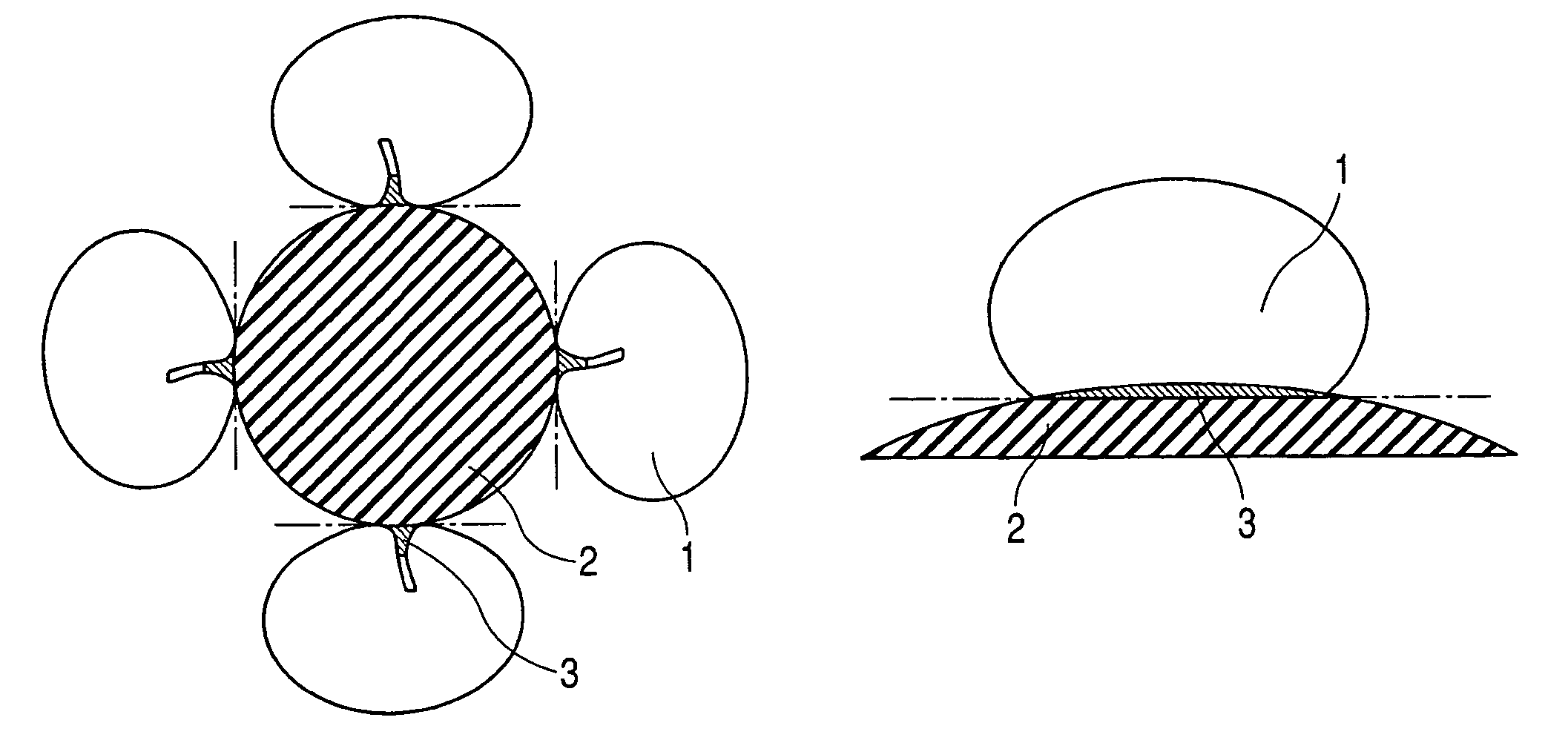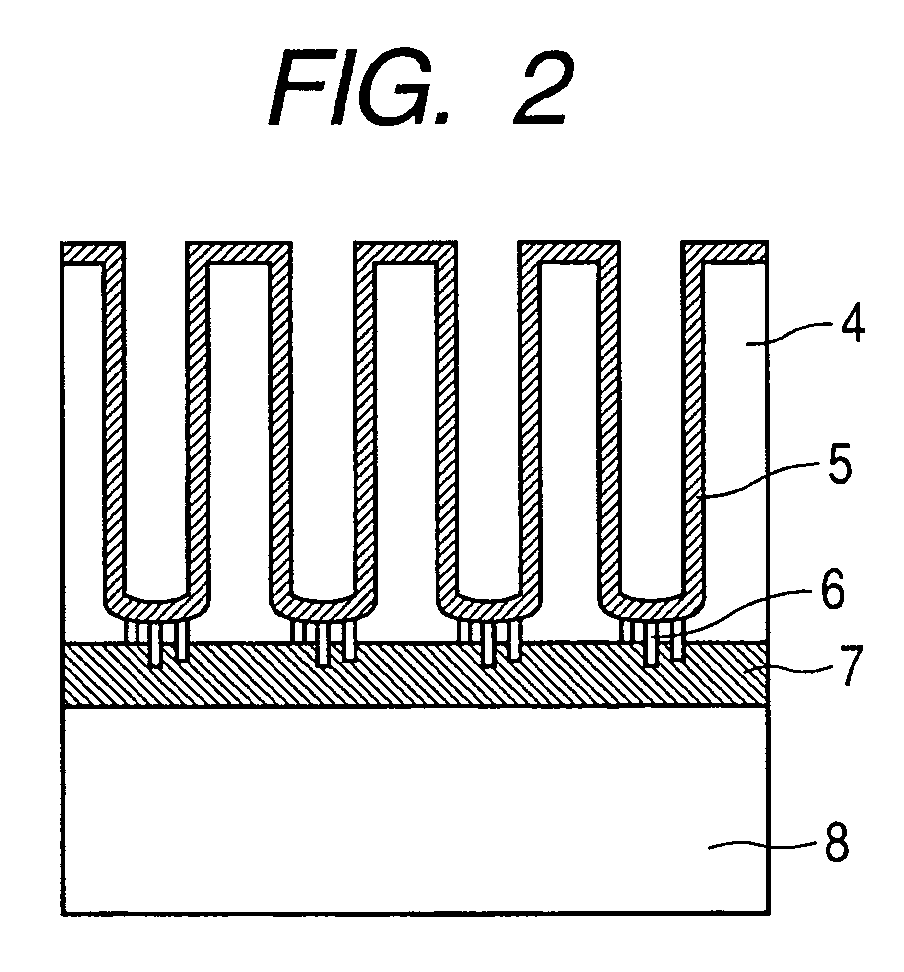Enzyme electrode and method of producing the same
a technology of enzyme electrodes and electrodes, applied in the field of enzyme electrodes, can solve the problems of limited output of biofuel cells limited sensitivity of sensors using limited sensitivity of enzyme electrodes using such enzyme electrodes, so as to improve environmental stability, increase catalytic current, and enhance electron transfer rate
- Summary
- Abstract
- Description
- Claims
- Application Information
AI Technical Summary
Benefits of technology
Problems solved by technology
Method used
Image
Examples
preparation example 1
[0065]A method of synthesizing a complex polymer represented by the following formula (1) is described.
[0066]
[0067]20 mL of ethylene glycol, 0.08 g of (NH4)2[OsCl6], and 0.38 g of 4,4′-dimethyl-2,2′-bipyridine were added to a 100 mL round bottom flask with a condenser. The mixture was stirred and irradiated with microwave of 300 W for 20 minutes with a microwave synthesizer (Microsynth made by Milestone) under nitrogen atmosphere. After cooling the solution to room temperature, 25 mL of water in which 0.4 g of Na2S2O4 was dissolved was added thereto. Deep purple precipitate produced after stirring at room temperature for 1 hour was filtrated and washed with water to remove excess salt, washed with diethyl ether to remove unreacted ligands and heated to 60° C. under reduced pressure to give dry Os(4,4′-dimethyl-2,2′-bipyridine)2Cl2.
[0068]15 mL of water, 2.63 g of acrylamide, 0.403 mL of 1-vinylimidazole and 0.069 mL of N,N,N′,N′-tetramethylethylenediamine were added to a 100 mL three...
preparation example 2
[0070]A method of synthesizing a complex polymer represented by the following formula (2) is described.
[0071]
[0072]3 g of 2,2′-bipyridyl-N,N′-dioxide, and 6 mL of concentrated sulfuric acid and 3 mL of fuming sulfuric acid were added to a 100 mL round bottom flask with a condenser on an ice bath. The mixture was stirred to dissolve 2,2′-bipyridyl-N,N′-dioxide. Thereto was further added 6 mL of fuming nitric acid (1.52) and the mixture was heated to 100° C. and kept for 4 hours. The reaction solution was air-cooled and poured into crushed ice, and the resulting yellow powder was collected by filtration. The powder was washed with water and dried by heating to 60° C. under reduced pressure to give 4,4′-dinitro-2,2′-bipyridyl-N,N′-dioxide.
[0073]4.3 mL of glacial acetic acid, 2.9 mL of acetyl chloride and 0.27 g of 4,4′-dinitro-2,2′-bipyridyl-N,N′-dioxide was added to a 100 mL round bottom flask with a condenser, and the mixture was heated at 70° C. for 4 hours in a hot water bath. The ...
preparation example 3
[0078]A method of preparing carbon-coated alumina nanoholes is described. An Nb film 7 having a thickness of 100 nm is formed on an n-type phosphorus doped single crystal Si substrate 8 having a resistance of 1×10−2 Ωcm polished to have a mirror surface by an RF sputtering method. Subsequently, an Al film of 500 nm is formed. An electrode is formed from the entire backside of the Si substrate, and anodization is performed in a 0.3M sulfuric acid aqueous solution at 3° C. by applying a DC voltage of 25V. In this step, anodization is performed with monitoring anodization current so as to detect a current that indicates that anodization starting from the Al surface reaches the Nb film. With the progress of the reaction, holes grow as Al is oxidized and turns to alumina, which is an insulating layer, and finally, the Nb base is conducted to the upper part through a conductive path 6. After the anodization, washing is performed with pure water and isopropyl alcohol to prepare an alumina ...
PUM
| Property | Measurement | Unit |
|---|---|---|
| particle diameter | aaaaa | aaaaa |
| particle size | aaaaa | aaaaa |
| particle size | aaaaa | aaaaa |
Abstract
Description
Claims
Application Information
 Login to View More
Login to View More - R&D
- Intellectual Property
- Life Sciences
- Materials
- Tech Scout
- Unparalleled Data Quality
- Higher Quality Content
- 60% Fewer Hallucinations
Browse by: Latest US Patents, China's latest patents, Technical Efficacy Thesaurus, Application Domain, Technology Topic, Popular Technical Reports.
© 2025 PatSnap. All rights reserved.Legal|Privacy policy|Modern Slavery Act Transparency Statement|Sitemap|About US| Contact US: help@patsnap.com



